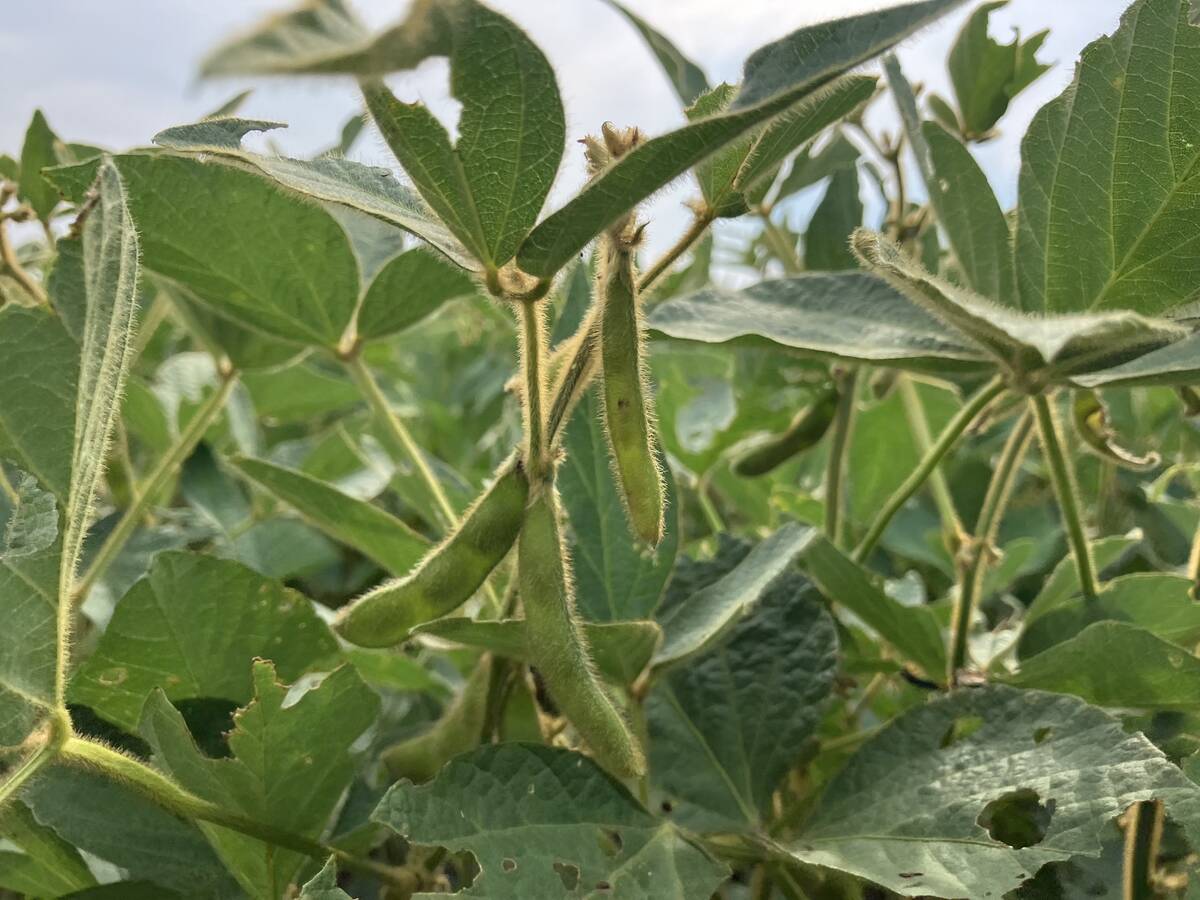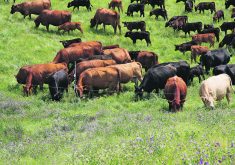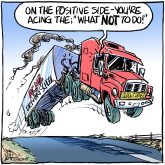Stock haulers
In response to your article by Mary MacArthur, “Packer strike boosts demand for cattle liners,” (Oct. 27, 2005) Marcel Roberge states that we have a pretty serious truck shortage out there and in order to entice trucks and drivers back to the livestock business, the rates charged to producers for hauling cattle have increased substantially.
“We’ve had to charge them (producers) astronomical rates, but it’s not going in our pockets. It’s what the truckers are demanding. In order to steal truckers from the oil patch, you’ve got to pay them a lot of money.”
Read Also

U.S. soy farmers hold bad hand in rigged game
More tariffs, an unlimited peso bailout, a government shutdown, no plan for federal assistance — and farmers are holding a bad hand in a rigged game where the rules change every day.
To set the facts straight, these so-called astronomical rates are not being demanded by our professional drivers either.
The rates that are being charged at this time are due to the rising energy costs that we have all felt, and we know whose pockets they are padding.
Have a look at some of the energy company’s profit margins….
I have said myself that I am almost embarrassed to quote some of the rates we have had to charge these days just for our operators to make a living but it has become the norm with the rising costs of operations.
As far as stealing from the oil patch, this is something that will not happen unless our rates double or triple from what they already are.
Oil patch workers only change when they get tired of their chosen vocation, not because of the money they make.
We are a profession which invests approximately $250,000 in a truck and trailer to haul a load of cattle and average between $90 and $120 per hour to do this.
I know of no other profession which operates on these kinds of margins except for our hard working people in agriculture.
Energy costs alone eat more than 30 percent of our revenue, with drivers earning another 20 percent plus.
Our hours are regulated so that we can only drive so many hours per day and we are expected to pay for our equipment, administration and make a living at this.
Livestock haulers are some of the hardest working men and women I know and to say that this is what we are demanding is not true.
Livestock haulers not only have to be professional drivers but need the skills to handle a live load and to work with live animals.
We have a lot of drivers out there but not everyone is cut out for the demanding work of dealing with live animals.
We in the livestock hauling business have been our own worst enemy for many years and have not kept up with rate increases to accommodate our current cost of doing business.
At present our rates fluctuate on a plus or minus basis according to fuel prices and we have a cost of living increase or decrease factored in on a yearly basis.
We are praying that we do not fall into the same pricing deficit that we have for the past 20 years.
– Keith Horsburgh,
President,
Grace Cattle Carriers Inc.,
Brooks, Alta.
Feedlot support
This letter is in support of the proposed feedlot northwest of Brandon.
In the 1950s and 1960s, I was farming two and one half miles north of Douglas, with a young wife and family, trying to buy my father’s farm.
The grain quota in those days was five to six bushels per acre and the old established farmers could get by, but in my situation, there was not enough money coming in.
I started a 2,000 head feedlot and raised my family in the middle of it. Our girls were teased about coming from the smelliest farm in the district.
During this time, their friends’ dads were looking in the bins to see if they could sell us another load of barley. I think most of the neighbours appreciated the grains and silage we purchased from them.
Urs Baessler finds himself in the same situation now – no money growing grain….
It bothers me that someone who made his money in the city moves out to the country and tells the farmers what they should do.
I have been on the Baessler farm in Switzerland several times and was always impressed with the neatness and cleanliness. His farm in Manitoba is the same, and if he builds a feedlot, it will also be the same.
If Urs Baessler doesn’t get the permit to build the feedlot, I am going to advise him to go to Alberta. If I wasn’t 80 years old, I would go with him.
– Ross Mitchell,
Brandon, Man.
Unfair tax
The unfair property tax on education goes back to the time of the Tommy Douglas administration. He promised to change this system …. Under every administration since, regardless of political stripe, (it) has only (been) given lip service.
Today, slightly more than one third of the rural municipalities in Saskatchewan have refused to pay the education tax without a change to a different system, based on income.
Farmers right across the province are in the worst financial position in history.
In the municipality that we are in, a huge portion of the land is for sale. There are farmers walking away and saying they no longer can survive and the rest of the province will be similar.
Our farm products have gone way below the cost of production. Our grain prices are less than they were in the 1920s.
At the same time, the education tax on our farmland has gone through the roof.
A little more than one third of our municipalities have taken the stand to benefit their farmers and withhold the unfair education tax on their farmland.
At the same time, municipalities that haven’t joined this tax revolt say they are giving moral support.
To me, they are both unfair and spineless. Farmers should pressure their councils.
– Bill Howse,
Porcupine Plain, Sask.
Vet help
I would like to address a few concerns I had with the article entitled “Farmer can’t find vet help” in the Dec. 15 issue.
Although I am not privy to the particulars of Mr. Smith’s case, I am concerned with the lack of resources that were offered to Mr. Smith.
Perhaps it was an oversight that there was no consultation with a ruminant nutritionist whose specialty in this species might have been a valuable asset in troubleshooting this farmer’s problem.
When at first they found no obvious pathological association, why was there no discussion with other experts who might have offered an alternative solution to the problem?
There are numerous agricultural professionals who are highly trained to offer advice to farmers.
Speaking as a professional, I believe it is our responsibility as professionals (agrologists and veterinarians) to work as a team to ensure the sustainability of Canadian agriculture.
Every province has what is known as an Institute of Agrologists where farmers can enlist the help of a specialist for their particular agribusiness.
While this situation on Mr. Smith’s farm was a tragedy, let us learn from this and improve our commitment to the farmer and to agriculture.
– Amanda Kroeker,
Dairy/Ruminant Nutritionist,
Lloydminster, Sask.
Big debt
In spite of the impression given by government vote buying, a billion dollars is not pocket change.
Without a milestone to judge by, the average citizen has no real conception of what the number represents.
We know it’s a million times a thousand, but that’s hard to put into perspective. Just what does the number one billion represent?
Some time ago, an economist gave us a milestone to judge it by. Since I had trouble accepting his explanation, out came the calculator to check it out.
By gosh, he was just about right on target.
His formula was this: Imagine yourself standing alongside the road, where a marathon race is in progress.
Runners are passing you at the rate of one per second, or 60 every minute. At that rate it would take 20 years for a billion runners to pass by.
At the present time our national debt is a bit more than $500 billion.
If we were to pay the principal at the rate of $1 per second, it would take 10,000 years to retire the debt.
Maybe we’d better get at it.
– Gerry Laughren,
Krydor, Sask.
Proud word
In my early new year’s mail, I received a magazine style mailing from the College of Agriculture, University of Saskatchewan.
Inside this mailing was a letter from the dean of agriculture, Ernie Barber. The letter was telling me that the word agriculture is now a poor word to be used for the name of the college. A new name is being sought.
I proudly attended the best university in this country, the University of Saskatchewan, and within this educational structure I chose to attend the College of Agriculture.
After completion of my course, I proudly received my diploma of agriculture.
Over a decade later, the powers that be at the College of Agriculture decided that a proper new agriculture building was required. I agreed and became a member of the Sodbusters Club. This club’s members donated money to get plans drawn up for a College of Agriculture building. …
To me, the word agriculture is the most solid, all encompassing hub word for our college.
The word agriculture is a historical word with the best solid foundation as any other college within the U of S. All the various facets of agriculture give it its strength, not unlike the various sections in engineering.
Removing or altering the name of what I consider the best college at the U of S is a slap in the face and it tells me that my chosen occupation and my papers from the university with the word agriculture on them is no longer valid.
It would be like the powers that be would want my community or province or nation’s name changed.
How sad that it appears that Mr. Barber seems to be ashamed of his title as dean of agriculture. Why would he accept the position if the title was distasteful?
By the way, Barber’s letter was printed on the College of Commerce, University of Saskatchewan letterhead. Does this indicate that Mr. Barber is operating as a wolf in sheep’s clothing?
Adding new facets to agriculture only makes it stronger. Changing the hub word to some other in my view only weakens the strong image it projects.
– Delwyn J. J. Jansen,
LeRoy, Sask.
Grain prices
Why the chronic low grain prices? During our Canadian Wheat Board board meetings, a binder is kept in the room and made available to all directors. This binder documents all the CWB sales and the relevant competition from the date of the last meeting.
Sometimes the competing product is from Argentina, Australia or Europe, but in most cases it is from the United States. …
In some markets, such as Japan and the United Kingdom, the CWB has developed loyalty to our brand and can achieve a significant premium to the U.S. price. But the price is still related to that U.S. benchmark and arbitraged to the markets in Chicago, Minneapolis and Kansas City.
I have been to the Grain Exchange in Rosario, Argentina, where they also monitor and sell in relation to the prices on the American exchanges. The American economy is the dominant world economy. They have the bulk of the exportable grain surpluses and therefore, American prices have a major impact on world prices.
Prior to 1985, the U.S. government set a floor price for wheat, corn and other major commodities that was close to the American farmer’s cost of production.
If the market did not match the loan rate, the farmer would sell the grain to the government at the loan rate. Thus, the U.S. loan rate set the price on the American exchanges and around the world.
In 1985, the U.S. decided it was no longer prepared to hold up the umbrella for world prices and they lowered the loan rate on major commodities. It was lowered by $1.09 per bushel for wheat.
In targeted export markets (most markets other than Japan, Europe, and the U.S.) they applied export subsidies, which were sometimes as high as $1 or $2 a bushel.
Ironically, the U.S. didn’t gain any market share through these subsidies, as Canada and all other exporters were forced to match U.S. prices, but the world price fell like a stone.
In 1996, the U.S. made further major changes to their farm programs, so the loan rate was no longer a floor price.
The farmer could sell to the market at whatever was offered and the U.S. government would pay the farmer a subsidy to bring the farmers’ return up to the loan rate.
This has allowed the multinational grain traders and processors to offer even lower prices to the American farmers. …
The Agricultural Policy Analysis Center of the University of Tennessee (www.agpolicy.org) has done an excellent study entitled “Rethinking U.S. Agricultural Policy: Changing Course to Secure Farmer Livelihoods Worldwide.” This study documents the effect of U.S. farm policy on world prices …
If U.S. policy makers would act on this study it would not only help to reduce their huge budgetary deficit but it could lead to changes that would improve the livelihoods and long-term viability of those who provide the world with one of life’s necessities: food.
– Art Macklin,
CWB Director,
Grande Prairie, Alta.














